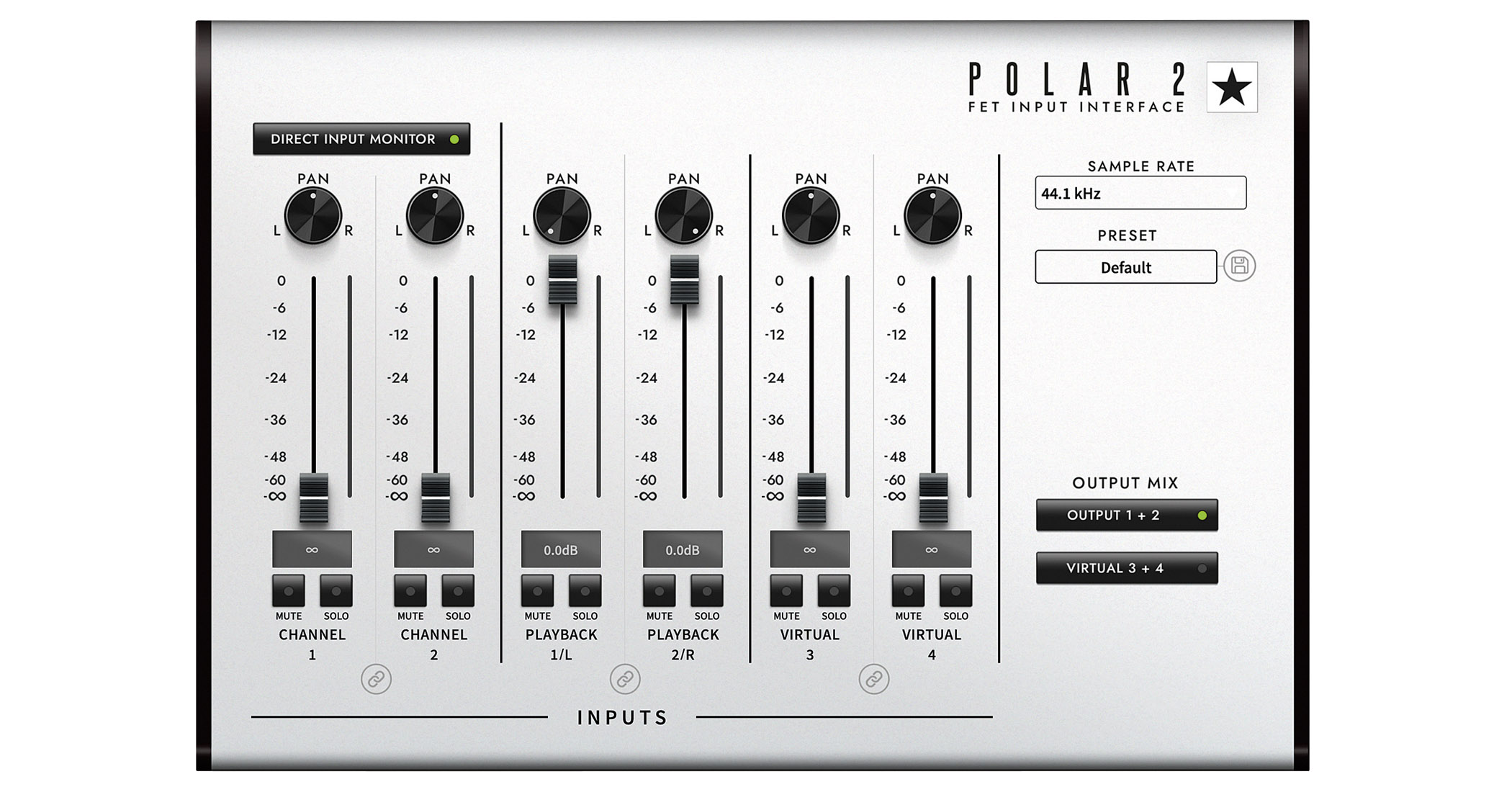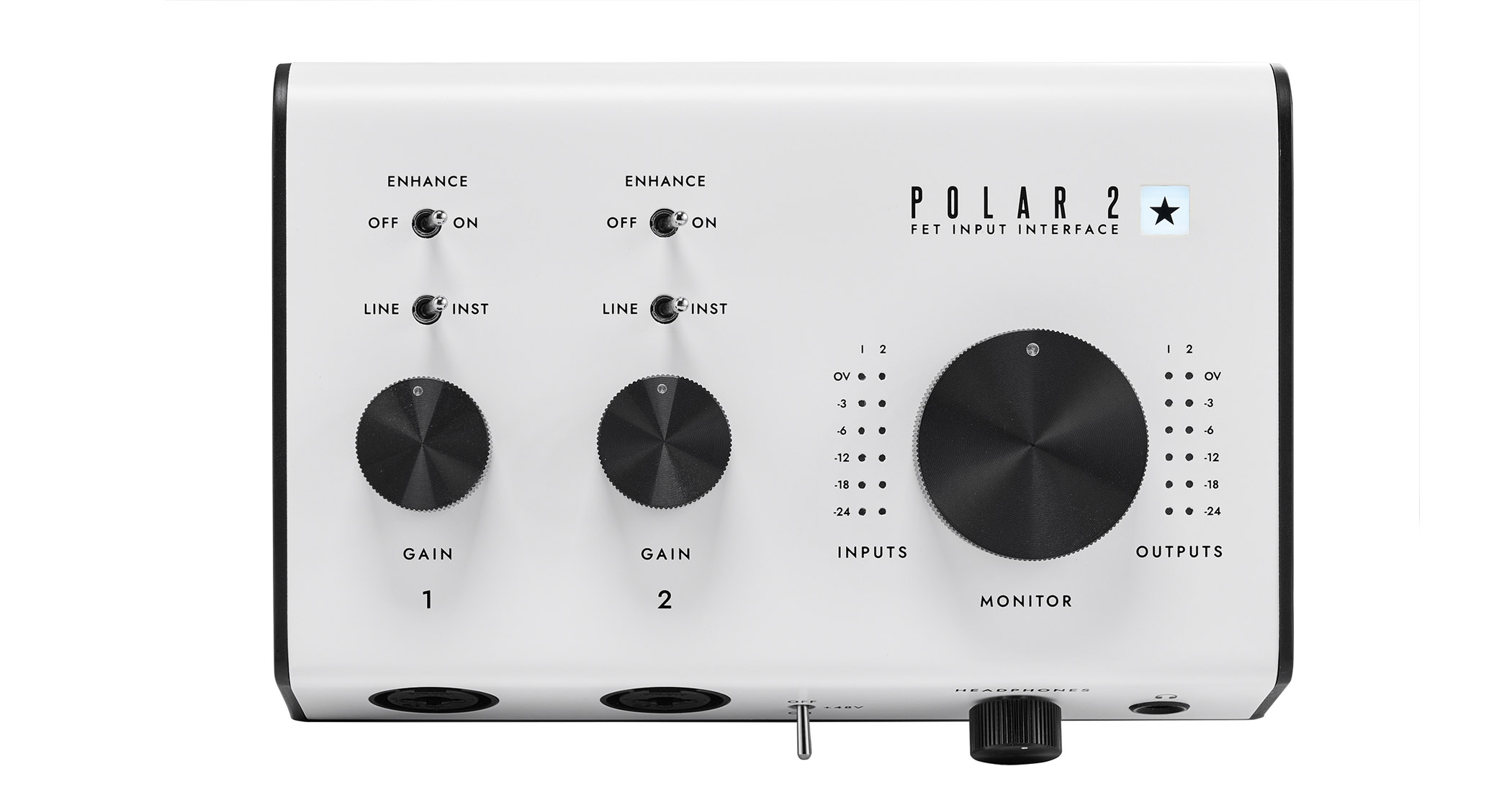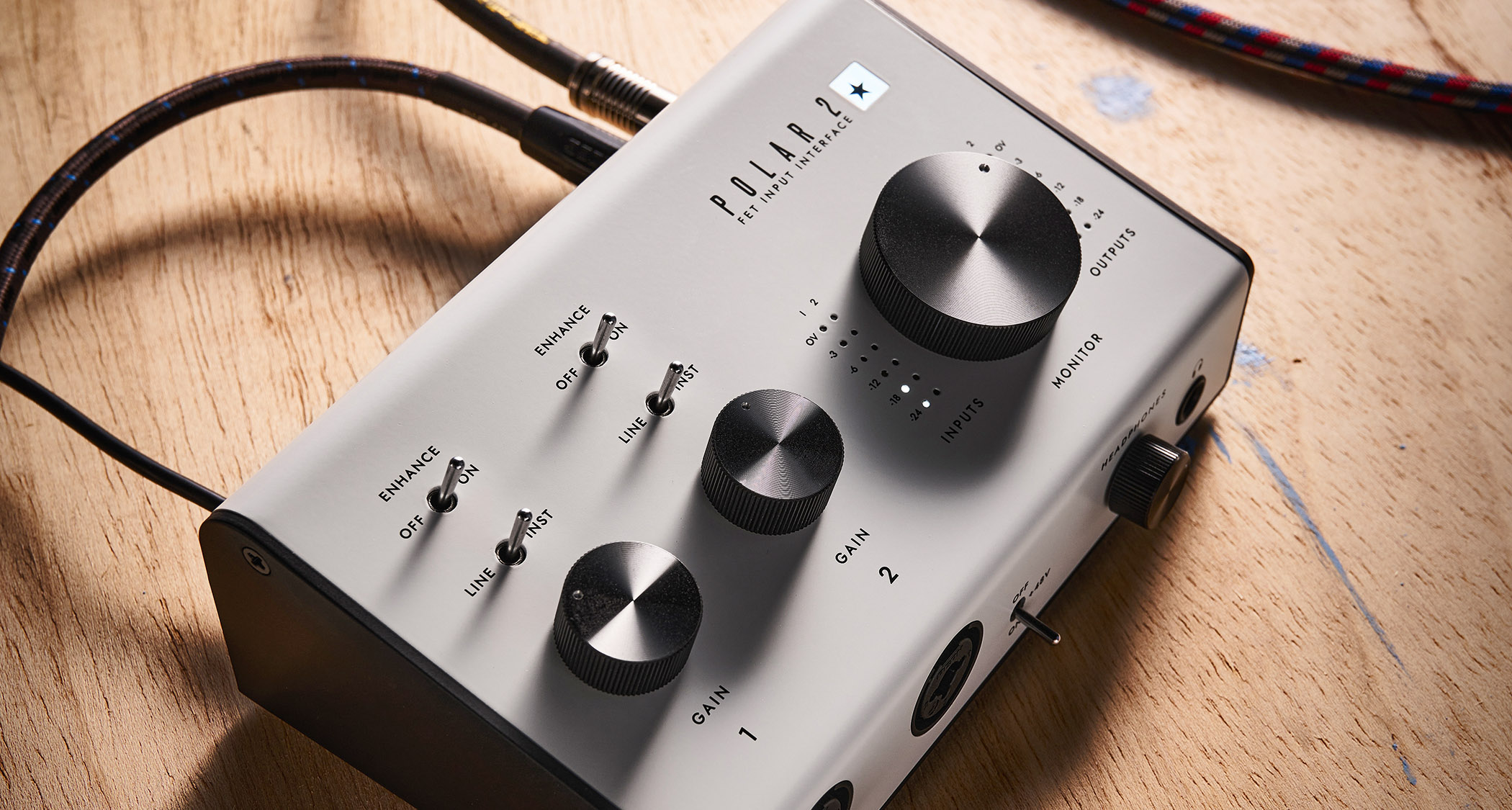Guitar World Verdict
A really easy-to-use interface, Blackstar’s Polar 2 has a great set of attributes for recording your guitar with the best possible sound.
Pros
- +
Compact size.
- +
Ease of use.
- +
Bus power.
- +
Enhance facility.
- +
Practical software included.
- +
Works well with pedals.
Cons
- -
We’d like an included power adaptor, but most people will already have one or not need one.
You can trust Guitar World
Blackstar certainly knows a bit about guitar amplification and then some, so when the brand releases an audio interface that it says is “designed by guitarists for guitarists”, it’s time to take notice.
The new Polar 2 is a solidly compact, bus-powered USB guitar audio interface with two identical inputs, each one equipped with a combo socket for a standard guitar cable or XLR mic cable. For monitoring, you have a standard pair of outputs to connect to your speaker system, plus a front-panel headphones jack with its own volume knob.
Blackstar tells us that it identified three specific areas in audio interface design that needed to be addressed, with ease of use being one of them. The other two are more guitar-specific: the feel and response when playing a guitar directly through an interface, and the setting of input gain levels to best suit a guitar’s wide dynamic range so signal peaks don’t lead to digital clipping.
While these aspects are tackled by starting with a high-headroom FET input stage, the special sauce is a switchable Enhance facility that brings in a circuit that’s designed to mimic the input stage of tube amplifiers.
It’s a subtle effect, but we preferred the playing dynamics with this feature on and the ‘lift’ it gave to the sound. What’s more, having the Enhance switch engaged also prevents digital overloads, letting you easily set an optimum level on the input gain knob to get a strong signal going into your DAW without any worry of ruined takes.

If you’re plugging in microphones, rather than guitar – perhaps taking advantage of the switchable phantom power and using a condenser mic to record acoustic guitar or vocals – then the mic preamps deliver a clean and detailed sound to which you can add some airy top-end by engaging the Enhance switch, which, in this instance, brings in a high-shelf EQ.
The simplicity of the unit’s layout makes it dead easy to use and that ease extends to the included Polar Control software, a virtual mixer that lets you set up your preferred monitor mixes.
On top of that, you get loads of bundled software for computer recording, including Blackstar’s full St James Plugin Suite for amp/cab sim and effect needs.

Specs
- PRICE: £179
- ORIGIN: China
- TYPE: USB audio interface
- FEATURES: 2x inputs, phantom power, headphone and standard monitor outputs, included Polar Control app, free software (Ableton Live Lite, ReLab LX480 Essentials Reverb, Melodyne Essential), USB cable and USB/jack power cable included
- CONTROLS: 2x Enhance (On/Off) switch, 2x Line/Instrument switch, Gain 1, Gain 2, Monitor, Headphones Volume
- CONNECTIONS: Combo inputs (1 & 2), standard (1/L, 2/R), standard stereo headphone output, USB-C
- POWER: USB bus power or 5V adaptor 1000mA
- DIMENSIONS: 114 (d) x 170 (w) x 60mm (h)
- CONTACT: Blackstar Amplification
Trevor Curwen has played guitar for several decades – he's also mimed it on the UK's Top of the Pops. Much of his working life, though, has been spent behind the mixing desk, during which time he has built up a solid collection of the guitars, amps and pedals needed to cover just about any studio session. He writes pedal reviews for Guitarist and has contributed to Total Guitar, MusicRadar and Future Music among others.
“The musicians, shops, and brands who use Reverb have always been at the center of all that we do”: Reverb has been acquired by two new investors – and will once again become an independently operated company
"A guitarist's ticket to easier home recording": PreSonus Quantum HD 2 review
Weezer’s first show was opening for Keanu Reeves’ band Dogstar. Now the John Wick star is set to play a villain in the Buddy Holly hitmakers’ forthcoming mockumentary












